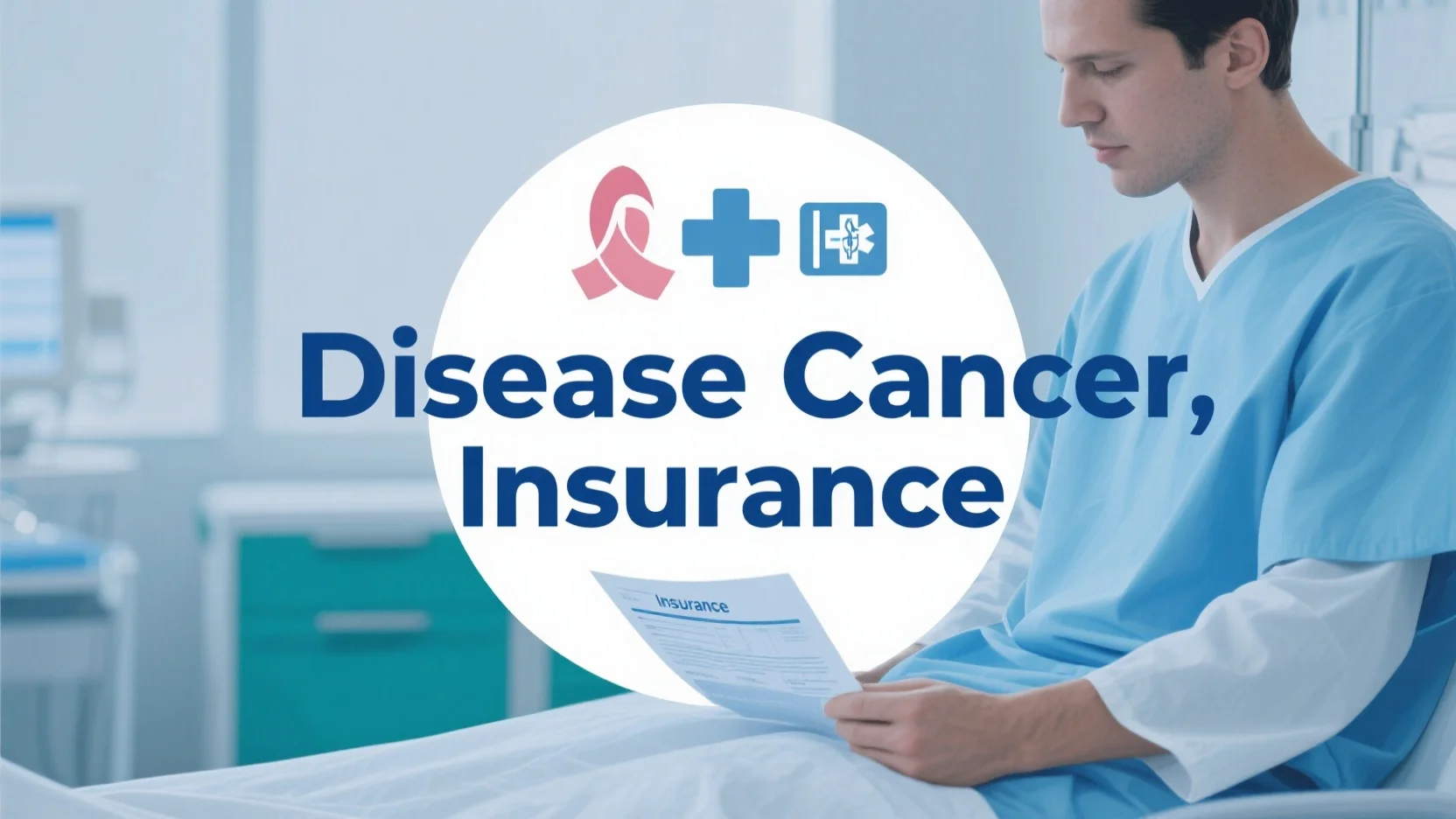Cancer treatment often brings unexpected financial challenges, even for those with health insurance. Studies reveal that 49% of cancer patients face medical debt, and 63% of patients and their families struggle financially after a diagnosis. Disease Cancer insurance helps bridge these gaps by covering costs that regular health insurance might miss. Surprisingly, many plans go beyond medical bills, offering benefits like transportation coverage or support for alternative therapies. Choosing the right plan ensures you get the financial protection tailored to your needs, making it essential to compare options carefully.
Key Takeaways
- Cancer treatment can lead to significant financial burdens, with 49% of patients facing medical debt even with insurance.
- Disease Cancer insurance fills the gaps left by traditional health insurance, covering both medical and non-medical expenses like transportation and lodging.
- Choosing the right cancer insurance plan involves comparing coverage options, premium costs, and payout structures to find the best fit for your needs.
- Look for plans that offer lump-sum payouts upon diagnosis, providing flexibility to use funds for various expenses beyond medical bills.
- Be aware of exclusions and waiting periods in policies, as these can impact your coverage and benefits when you need them most.
- Consider purchasing cancer insurance early to avoid waiting periods and ensure you have coverage when facing a diagnosis.
- Review the unique features of top providers to find a plan that aligns with your financial situation and treatment preferences.
Why Disease Cancer Insurance Matters

The Financial Burden of Cancer Treatment
Cancer treatment often comes with overwhelming financial challenges. Even with health insurance, many patients face significant out-of-pocket expenses. Studies show that *49% of cancer patients and survivors* report being burdened by medical debt. Shockingly, 98% of these individuals already had insurance when the debt occurred. This highlights the gaps in traditional health insurance plans, which may not cover all treatment-related costs.
The expenses can quickly add up. For example, some patients may pay $10,000 to $15,000 annually for a single drug. In total, cancer patients spend $16 billion out-of-pocket annually on treatments. These costs are especially difficult for low-income families, blue-collar workers, and those who are uninsured or underinsured. Without additional financial support, managing these expenses becomes nearly impossible for many households.
How Cancer Insurance Can Help
Disease Cancer insurance provides a safety net for individuals facing the high costs of cancer treatment. Unlike standard health insurance, these plans are designed to cover expenses that might otherwise fall through the cracks. For instance, they can help pay for chemotherapy, radiation, hospital stays, and even non-medical costs like transportation or lodging during treatment.
One of the most valuable features of cancer insurance is its flexibility. Many policies offer lump-sum payouts upon diagnosis. This means you receive a one-time cash benefit that you can use however you see fit. Whether it’s paying for alternative therapies, covering lost income, or managing everyday expenses, this financial support can make a significant difference.
By supplementing your existing health insurance, cancer insurance ensures you have the resources to focus on recovery without constant financial stress. It bridges the gap between what your health insurance covers and the actual costs of treatment, giving you peace of mind during a challenging time.
Key Features to Compare in Disease Cancer Insurance Plans
When selecting a Disease Cancer insurance plan, understanding its key features can help you make an informed decision. Each plan offers unique benefits, so comparing them ensures you choose one that aligns with your needs.
Coverage Options
Coverage varies significantly between plans. Some policies focus solely on medical expenses, while others extend to non-medical costs. Comprehensive plans often cover treatments like chemotherapy, radiation, and surgery. They may also include hospital stays, prescription drugs, and follow-up care. Beyond medical needs, certain policies provide funds for transportation, childcare, or housing payments during treatment.
For example, some plans even cover out-of-network care or alternative therapies, giving you more flexibility in your treatment choices.
When comparing plans, check if they address both direct and indirect costs. A plan that supports your recovery journey holistically can reduce financial stress and improve your overall experience.
Premium Costs and Affordability
Premiums play a crucial role in determining the affordability of a cancer insurance plan. The cost of premiums depends on factors like your age, health history, and the level of coverage. On average, a policy covering $20,000 might cost between $100 and $165 annually.
Evaluate how the premium fits into your budget. While lower premiums may seem attractive, they might come with limited benefits. Higher premiums often provide broader coverage, but they could strain your finances. Strike a balance by choosing a plan that offers adequate protection without exceeding your financial limits.
Payout Structure
The payout structure determines how you receive benefits. Many Disease Cancer insurance plans offer a lump-sum payout upon diagnosis. This one-time cash benefit gives you the freedom to allocate funds as needed. You can use it for medical bills, lost income, or everyday expenses like groceries and utilities.
Lump-sum payouts provide flexibility, allowing you to focus on recovery instead of worrying about financial constraints.
Some plans also offer ongoing payments for specific treatments or milestones during your recovery. Review the payout terms carefully to ensure they align with your financial needs and treatment plan.
Exclusions and Waiting Periods
When exploring Disease Cancer insurance plans, understanding exclusions and waiting periods is crucial. These factors can significantly impact your coverage and benefits.
Exclusions refer to specific conditions or situations that a policy does not cover. Many cancer insurance plans exclude pre-existing conditions, which means if you had cancer or related symptoms before purchasing the policy, it might not provide benefits for those conditions. Additionally, some policies limit coverage to certain types of cancer. For example, non-invasive cancers or cancers in remission may not qualify for benefits under some plans. Always review the policy details to ensure it aligns with your health history and potential risks.
Waiting periods are another important aspect to consider. Most cancer insurance policies include a waiting period, typically ranging from 30 to 90 days, before benefits become active. During this time, if you receive a cancer diagnosis, the policy may not pay out benefits. For instance, Aflac Cancer Insurance enforces a 30-day waiting period in most states. In some cases, if cancer is diagnosed within the waiting period, benefits might only become available after the first 12 months of coverage. This highlights the importance of securing a policy well in advance of any potential health concerns.
To navigate these limitations effectively, follow these steps:
- Read the Fine Print: Carefully examine the exclusions section of the policy. Look for any restrictions on specific cancer types or treatments.
- Understand the Waiting Period: Confirm how long the waiting period lasts and what happens if a diagnosis occurs during this time.
- Plan Ahead: Purchase cancer insurance early to avoid being caught in a waiting period when you need coverage the most.
By being proactive and informed, you can select a plan that minimizes exclusions and ensures timely access to benefits when you need them.
Top Providers and Their Offerings
When choosing a Disease Cancer insurance plan, understanding the strengths and unique features of top providers can help you make an informed decision. Below, we explore three leading companies and what they bring to the table.
UnitedHealthcare: Strengths, Weaknesses, and Unique Features
UnitedHealthcare stands out for its comprehensive coverage options and nationwide network. It offers plans that cover a wide range of cancer-related expenses, including chemotherapy, radiation, and hospital stays. One of its key strengths lies in its flexibility. Policyholders can use benefits for both medical and non-medical costs, such as transportation or lodging during treatment.
UnitedHealthcare also provides access to a robust network of specialists, ensuring you receive quality care.
However, some plans may come with higher premiums compared to competitors. Additionally, the waiting periods for certain benefits might feel restrictive for those seeking immediate coverage. Despite these drawbacks, UnitedHealthcare remains a strong choice for individuals looking for extensive coverage and reliable support.
Blue Cross Blue Shield: Strengths, Weaknesses, and Unique Features
Blue Cross Blue Shield (BCBS) offers a variety of cancer insurance plans tailored to meet diverse needs. Its policies often include coverage for treatments like surgery, prescription drugs, and follow-up care. A notable feature is its focus on out-of-network care, which provides flexibility for patients seeking specialized treatment outside their local area.
BCBS emphasizes affordability by offering plans with competitive premiums. This makes it an attractive option for families on a budget.
On the downside, some BCBS plans may have limited coverage for alternative therapies or non-medical expenses. Additionally, exclusions for pre-existing conditions could pose challenges for some applicants. Despite these limitations, BCBS remains a trusted provider with a strong reputation for customer service and accessibility.
Cigna: Strengths, Weaknesses, and Unique Features
Cigna excels in offering customizable cancer insurance plans that cater to individual preferences. Its policies cover a broad spectrum of expenses, from hospital stays and surgeries to chemotherapy and radiation treatments. One of Cigna’s standout features is its lump-sum payout option, which allows you to use funds as needed, whether for medical bills or everyday expenses.
Cigna’s plans often include additional benefits, such as access to wellness programs and support services during recovery.
However, some plans may have higher deductibles, which could increase out-of-pocket costs. Waiting periods for certain benefits might also delay access to coverage. Despite these challenges, Cigna’s flexibility and comprehensive offerings make it a top contender for those seeking tailored solutions.
Surprising Facts About Disease Cancer Insurance Plans

Common Misconceptions About Cancer Insurance
Many people misunderstand cancer insurance, which can lead to missed opportunities for financial protection. One common misconception is that your regular health insurance covers all cancer-related expenses. In reality, traditional health insurance often leaves gaps, such as costs for transportation, lodging, or alternative therapies. These gaps can create significant financial strain during treatment.
Another myth is that cancer insurance only benefits older individuals. Cancer can affect anyone, regardless of age. For example, *Paul and Kim were preparing for their second child when Paul received a cancer diagnosis*. Their cancer insurance helped cover out-of-pocket expenses, ensuring they didn’t have to dip into their savings. This highlights how cancer insurance can provide critical support for families at any stage of life.
Some also believe that cancer insurance payouts can only be used for medical bills. However, these policies often allow flexibility. You can use the funds for daily living expenses, childcare, or even travel to specialized treatment centers. This flexibility ensures you can focus on recovery without worrying about financial constraints.
Hidden Benefits or Clauses to Look For
Cancer insurance policies often include hidden benefits that many policyholders overlook. For instance, some plans offer wellness benefits, which reimburse you for cancer screenings. Paul’s wellness benefit helped pay for the screening that detected his cancer early, demonstrating how these features can promote proactive health management.
Another hidden benefit is the lump-sum payout option. Upon diagnosis, many policies provide a one-time cash benefit. This payout can be used however you see fit, whether for medical treatments, lost income, or even household bills. Some policies also cover non-medical costs like transportation to treatment facilities or lodging near specialized hospitals.
Certain plans include clauses for alternative therapies, such as acupuncture or naturopathy, which can complement traditional treatments. Reviewing your policy carefully can help you identify these lesser-known benefits. Always ask your provider about additional features that could enhance your coverage.
How Cancer Insurance Complements Other Health Insurance
Cancer insurance works alongside your existing health insurance to provide comprehensive financial protection. While health insurance covers standard medical expenses, it often excludes indirect costs like travel, lodging, or lost wages. Cancer insurance fills these gaps, ensuring you have the resources to manage all aspects of your treatment journey.
For example, a high-powered executive with a robust health insurance policy still relied on her cancer insurance to cover significant medical expenses. The seamless claims process allowed her to focus on recovery without financial stress. This demonstrates how cancer insurance can act as a safety net, even for those with strong health coverage.
Additionally, cancer insurance provides flexibility. Many policies offer lump-sum payouts, which you can allocate based on your unique needs. Whether you need to pay for experimental treatments, hire a caregiver, or cover everyday expenses, this financial support complements your primary health insurance effectively.
By combining cancer insurance with your existing coverage, you gain peace of mind. You can focus on recovery, knowing that both medical and non-medical expenses are addressed.
Understanding the financial impact of cancer is crucial for protecting yourself and your family. Disease Cancer insurance offers a vital safety net, helping you manage both medical and non-medical expenses during treatment. To make the best choice, compare plans based on coverage, cost, and payout structure. Research top providers and evaluate their unique features to find a plan that aligns with your needs. Start by assessing your current health insurance to identify gaps. By taking these steps, you can secure peace of mind and focus on recovery without unnecessary financial stress.
FAQ
What is Cancer Insurance?
Cancer insurance is a specialized policy designed to provide financial support if you receive a cancer diagnosis. Unlike standard health insurance, it focuses on covering costs that your regular plan might not address. These include expenses like transportation, lodging, or alternative therapies. Some policies also offer lump-sum payouts, giving you the flexibility to use the funds as needed.
Who Should Consider Buying Cancer Insurance?
Anyone concerned about the financial impact of a cancer diagnosis should consider this type of insurance. It can be especially beneficial for individuals with a family history of cancer or those who want additional coverage beyond their health insurance. Even if you feel healthy, securing a policy early ensures you’re prepared for unexpected situations.
How Does Cancer Insurance Work?
Cancer insurance works by providing benefits when you’re diagnosed with cancer. Depending on the policy, you may receive a lump-sum payout or ongoing payments to cover specific expenses. You can use these funds for medical treatments, lost income, or everyday costs like groceries and childcare. The flexibility of these plans allows you to focus on recovery without financial stress.
Does Cancer Insurance Cover All Types of Cancer?
Coverage depends on the specific policy. Many plans cover a wide range of cancers, but some may exclude non-invasive or pre-existing conditions. For example, certain policies might not provide benefits for cancers in remission or early-stage diagnoses. Always review the policy details to understand what’s included and excluded.
Can I Use Cancer Insurance Alongside My Health Insurance?
Yes, cancer insurance complements your existing health insurance. While health insurance covers standard medical expenses, cancer insurance fills gaps by addressing indirect costs like travel, lodging, or lost wages. Combining both types of coverage ensures comprehensive financial protection during treatment.
What Are the Key Benefits of Cancer Insurance?
Cancer insurance offers several benefits, including:
- Lump-sum payouts upon diagnosis.
- Coverage for non-medical expenses like transportation and lodging.
- Flexibility to use funds for daily living costs or alternative therapies.
- Peace of mind knowing you have financial support during a challenging time.
These features make it a valuable addition to your financial planning.
Are There Any Waiting Periods for Cancer Insurance?
Most cancer insurance policies include a waiting period, typically ranging from 30 to 90 days. During this time, benefits won’t activate if you receive a diagnosis. For instance, some policies may only provide coverage after the first 12 months if cancer is diagnosed within the waiting period. Purchasing a policy early helps you avoid these limitations.
How Much Does Cancer Insurance Cost?
The cost of cancer insurance varies based on factors like age, health history, and coverage level. On average, a policy covering $20,000 might cost between $100 and $165 annually. While lower premiums may seem appealing, they often come with limited benefits. Evaluate your budget and needs to find a plan that offers adequate protection.
Can I Purchase Cancer Insurance If I Have a Pre-Existing Condition?
Many cancer insurance policies exclude pre-existing conditions. If you’ve had cancer or related symptoms before purchasing the policy, it may not cover those conditions. However, some providers offer plans with fewer restrictions. Always check the exclusions section of the policy to ensure it aligns with your health history.
How Do I Choose the Right Cancer Insurance Plan?
To choose the right plan, consider the following steps:
- Assess Your Needs: Identify gaps in your current health insurance.
- Compare Coverage Options: Look for plans that address both medical and non-medical costs.
- Evaluate Premiums and Payouts: Balance affordability with comprehensive benefits.
- Review Exclusions and Waiting Periods: Ensure the policy fits your health history and timeline.
By taking these steps, you can select a plan that provides the financial protection you need.

